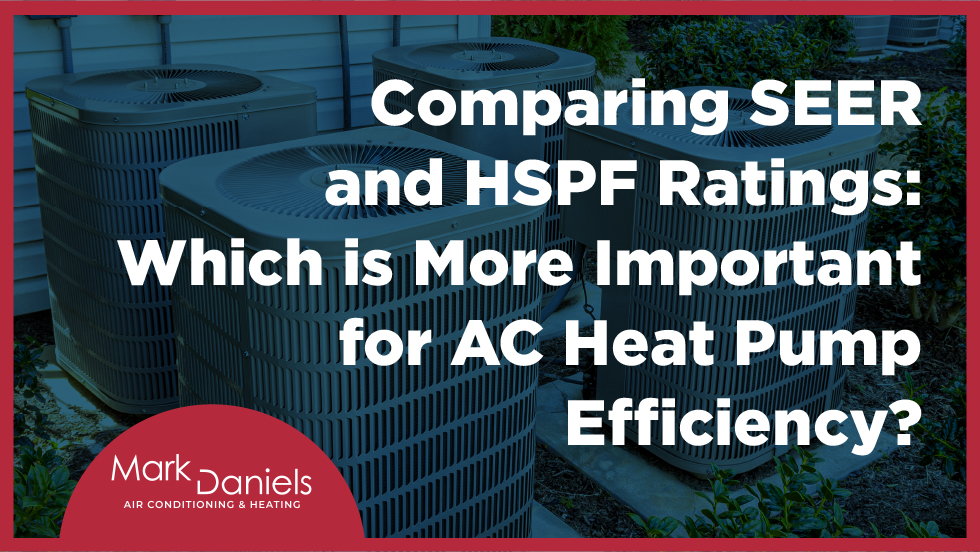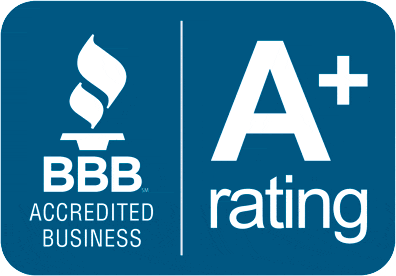Licensed | Bonded | Insured

Comparing SEER and HSPF Ratings: Which is More Important for AC Heat Pump Efficiency?
Are you considering buying your home a new heat pump this summer?
You’re not alone.
Research shows that more than four million Americans bought heat pumps in 2022.
You’ll see the acronyms SEEF and HSPF energy efficiency ratings as you shop.
Which is more important for AC heat pump efficiency, though?
Let’s explore which one you should pay attention to the most.
Heat Pump SEER Ratings
“SEER” stands for “seasonal energy efficiency rating.”
This rating indicates how efficient a heat pump is in hot weather.
When SEER standards were introduced in 1992, AC units had to have minimum SEER ratings of 10.
This minimum requirement later jumped to 13.
The SEER rating scale goes all the way to 21.
A higher number means greater air conditioning energy efficiency, even in extremely hot weather.
How SEER Ratings Are Calculated
SEER ratings are based on how much energy is necessary to remove certain amounts of heat from rooms.
The heat amount you need to remove from a room is the “tonnage.”
This is measured in British thermal units or BTUs.
This is important because air conditioning eliminates room humidity and makes the air cool.
Air conditioning units work a lot like refrigerators.
Keep in mind that other factors complicate SEER ratings, though.
For instance, you’ll also need to pay attention to your “cooling load.”
This involves the number of vents in your home and whether your climate is cool or hot.
For instance, a city in Washington may have a lower cooling load than one in Arizona would.
That’s because removing heat in Washington takes less energy.
Heat Pump HSPF Ratings
“HSPF” stands for “heating seasonal performance factor.”
This rating measures how efficient a heat pump is in cold weather.
New heat pumps must have minimum HSPF ratings of 7.7.
However, high-efficiency pumps have higher ratings of between 8.5 and 10.
You may even find models with HSPF ratings higher than 12.
A higher HSPF rating indicates more effective heating on the coldest days.
Units with higher HSPF ratings are perfect for colder climates.
How HSFP Ratings Are Calculated
Your heating unit will pump in warm air.
So, heat pumps’ HSPF ratings are based on their heat output based on the electricity used (watt-hours).
You get a unit’s HSPF rating by dividing its heating output (BTUs) by electrical power input.
What complicates HSFP ratings is the season.
A heat pump may work harder in one season versus another, depending on how different the inside and outside temperatures are.
It also depends on how long your unit operates at these times.
Still, as mentioned earlier, higher HSFP ratings mean more efficient units and long-term energy savings.
Which Rating Is Best for Comfort?
HSPF and SEER ratings are fundamentally alike.
As mentioned earlier, HSPF measures heating efficiency, while SEER measures cooling efficiency.
This is the main difference.
Note that although SEER and HSPF ratings are important, neither ultimately guarantees a certain comfort level in your home.
That’s because they merely measure heat pumps’ performance and efficiency.
The correct sizing of your heat pump for your climate will play an even more critical role in how comfortable your home is after you’ve installed a heat pump in it.
Let’s say your climate is cold.
If your heat pump is too small, your home will be cold.
Meanwhile, if your climate is hot, your home will be uncomfortably hot during the day’s hottest time.
You’ll also want to pay attention to your home’s humidity levels, which can impact your comfort, too.
High humidity levels can cause condensation to form on your windows.
It can also lead to mold. Meanwhile, too dry of a house may lead to sinus issues and headaches for you and your family members.
Heat Pump Efficiency: Tips for Sizing a Unit
A perfectly sized heat pump will keep your house comfortable in every season if your home is airtight and insulated.
It may also save you several thousand dollars in maintenance, installation, and energy costs.
Figuring out which heat pump size is appropriate for your home can be challenging, though.
Bigger homes in extreme climates usually need larger heat pumps.
However, you also have to consider factors like insulation and draftiness.
An HVAC installer can help you choose the right heat pump size for your house by performing calculations.
During this process, they should ask you several questions.
They may oversize and over-quote you for the unit if they don’t.
Try to get quotes from multiple AC installers.
This size is likely correct if they all recommend a particular heat pump size.
However, let’s say different installers suggest slightly different heat pump sizes.
You might want to choose the smaller heat pump model.
As long as your unit is designed to handle your local climate based on its HSFP and SEER ratings, it should work well enough for your home.
How We Can Help with Heating and Cooling
SEER and HSPF heat pump efficiency ratings are important for AC heat pump efficiency.
However, SEER ratings indicate how efficient units are in warm weather.
Meanwhile, HSPF ratings will tell you how efficient units are in cold weather.
At Mark Daniels Air Conditioning & Heating, we’re excited to offer high-quality air conditioning and heating installation and repair services.
We also offer a maintenance program.
With its warranty, this will keep your unit in great standing and help you decrease your operational costs.
Contact us to learn more about our services!
Curious about AC and heat pump efficiency services? Our team at Mark Daniels Air Conditioning & Heating offers expert maintenance and tailored insight to your HVAC needs. Call (480) 571-7219 or request service online now!
Read More about Air Conditioning & Heating Tips:
5 Benefits of Upgrading Your Residential HVAC Service
HVAC Tips for Summer: Tips to Keep Your Home Cool Without Overworking Your AC



